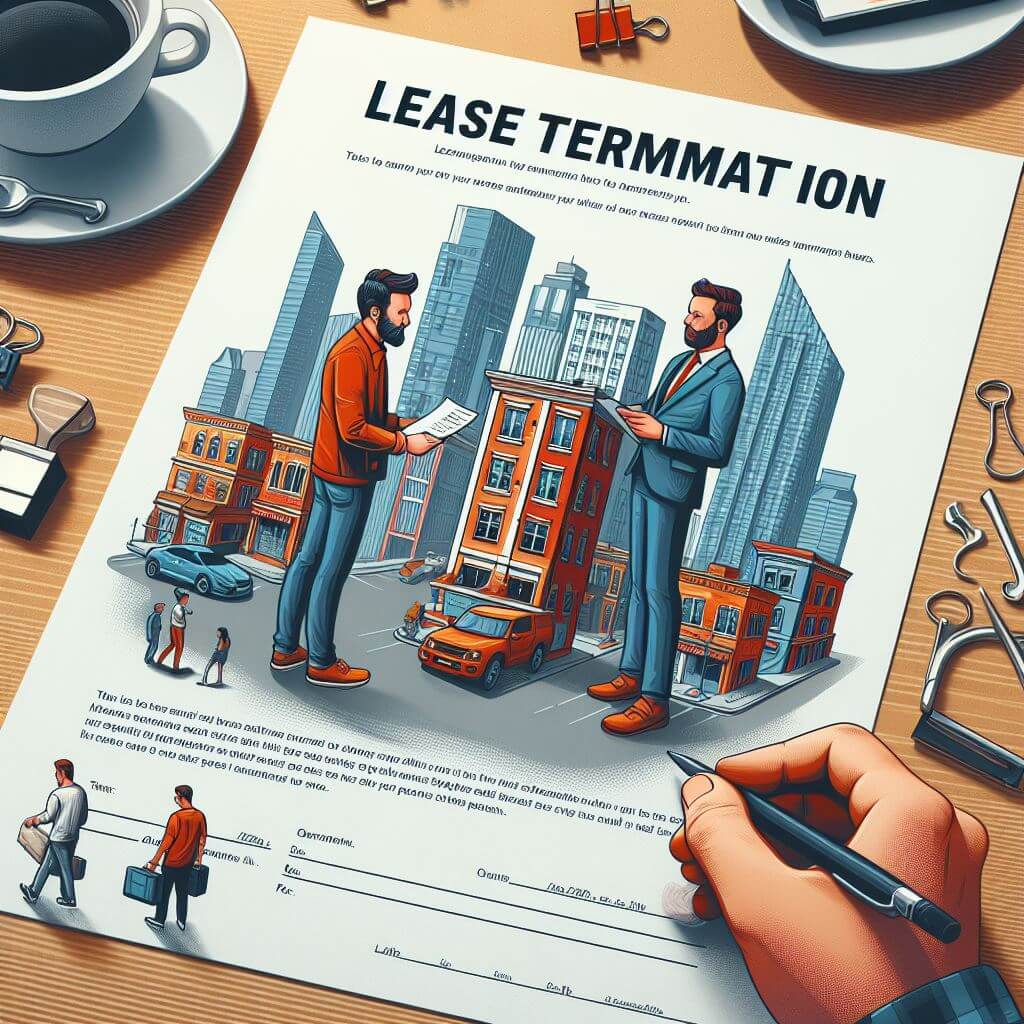Lease Termination Letter from a Tenant : A Comprehensive Guide with Example

Example of lease termination letter from a tenant is a crucial document in the rental process, ensuring a smooth transition for both the party.
It serves multiple purposes, from legal compliance to fostering clear communication. This article will delve into the importance of a lease termination letter from a tenant, when it should be used, and what actions to take after signing it.
Why is a lease termination letter important?
A lease termination letter serves as formal notice of a tenant’s intent to vacate a rental property. Here are several reasons why it is essential:
-
Legal Requirement:
In many jurisdictions, providing written notice of lease termination is a legal requirement. This formal notice protects the tenant from potential legal issues and ensures compliance with local laws and lease agreement terms.
-
Clarity and Documentation:
A lease termination letter provides clear documentation of the tenant’s intent to vacate the property. This clarity helps prevent misunderstandings and disputes between the tenant and the landlord regarding the end date of the lease and the tenant’s responsibilities.
-
Notice Period:
The letter typically includes a notice period, which is often stipulated in the lease agreement (e.g., 30 or 60 days). Providing sufficient notice gives the landlord adequate time to find a new tenant, minimizing the vacancy period and potential financial loss.
-
Proof of Communication:
Having a written termination letter serves as proof that the tenant informed the landlord of their intention to leave. This proof can be essential in cases of disputes or if the landlord claims they were not notified properly.
-
Return of Security Deposit:
The letter often includes a request for the return of the security deposit. By providing a forwarding address and outlining the expected return of the deposit, the tenant sets the stage for a smoother and more transparent process.
-
Final Inspection and Repairs:
Including a request for a final inspection in the termination letter allows the tenant to address any repairs or cleaning needed to meet the lease’s requirements. This can help ensure the full return of the security deposit.
-
Professionalism and Goodwill:
Sending a formal termination letter demonstrates professionalism and respect towards the landlord. This can help maintain a positive relationship, which might be beneficial for future rental references.
-
Record-keeping:
A lease termination letter creates an official record of the tenant’s decision to end the lease. Both the tenant and landlord can keep copies of the letter for their records, which is useful for future reference, especially if issues arise post-move-out.
When to Use a
A lease termination letter should be used in the following scenarios:
-
End of Lease Term:
When the lease is nearing its end and the tenant decides not to renew.
-
Early Termination:
When the tenant needs to end the lease before the agreed-upon end date, due to reasons such as job relocation, family emergencies, or other personal circumstances.
-
Lease Violation:
If the landlord has violated the terms of the lease (e.g., failing to make necessary repairs, breach of privacy), the tenant may choose to terminate the lease early.
Using a lease termination letter in these scenarios ensures that the tenant provides proper notice and follows legal and contractual obligations.
Actions to Take After Signing the Lease Termination Letter
Once the lease termination letter is signed, follow these steps to ensure a smooth transition:
-
Deliver the letter:
Send the signed letter to the landlord via a reliable method, such as certified mail, email, or hand delivery. Ensure you have proof of delivery in case of future disputes.
-
Schedule a Final Inspection:
Coordinate with the landlord to set a date for the final inspection. This allows you to address any issues that may affect the return of your security deposit.
-
Prepare for Move-Out:
Start preparing for your move-out by packing, cleaning the property, and making any necessary repairs as outlined in the lease agreement.
-
Forwarding Address:
Provide the landlord with your new address for forwarding any mail and returning the security deposit.
-
Utilities and Services:
Arrange for the transfer or cancellation of utilities and services (e.g., electricity, water, internet) effective from the move-out date.
-
Return Keys:
Plan to return all keys, access cards, and any other property belonging to the landlord on the final day of your tenancy.
-
Keep Copies:
Keep a copy of the signed lease termination letter and any correspondence with the landlord for your records.
Sample Lease Termination Letter

[Your Name]
[Your Current Address]
[City, State, ZIP Code]
[Email Address]
[Phone Number]
[Date]
[Landlord’s Name]
[Landlord’s Address]
[City, State, ZIP Code]
Subject: Notice of Lease Termination
Dear [Landlord’s Name],
I am writing to inform you of my intent to terminate the lease for the property located at [Rental Property Address], effective [Termination Date]. This notice complies with the [30/60] day notice period required by the lease agreement.
Please use the following address for any future correspondence and to return my security deposit:
[Your Forwarding Address]
[City, State, ZIP Code]
I would like to schedule a final inspection of the property on [Proposed Date] to discuss any potential deductions from my security deposit.
Thank you for your attention to this matter. Please confirm receipt of this notice and let me know if you require any further information.
Sincerely,
[Your Signature (if sending a hard copy)]
[Your Printed Name]
Conclusion
A lease termination letter from a tenant is an essential document that facilitates a smooth and legally compliant end to a tenancy. It ensures clear communication, provides proof of intent, and helps manage expectations for both parties. Knowing when to use the letter and what actions to take after signing it ensures that tenants meet their obligations and protect their interests during the move-out process. By following these guidelines, tenants can navigate the end of their lease with professionalism and ease.
Also Look this important Articles
Sponsorship Letter for a Visa: A Comprehensive Guide
How to Write an Internship Offer Letter: A Comprehensive Guide
